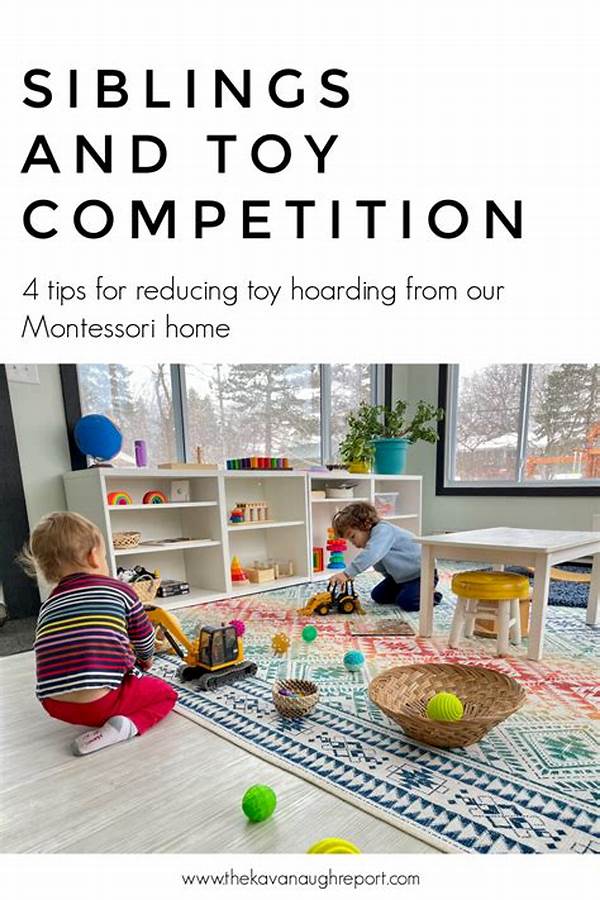Creating such a detailed content piece as requested involves numerous paragraphs and sections. Let’s break down the entire request into manageable parts. Below, you’ll find an outline and a start to each section, highlighting how Montessori supports sibling cooperation.
Read More : Apa Itu Montessori School
—
How Montessori Supports Sibling Cooperation
Introduction
Sibling rivalry is more common than brave heroes in bedtime stories. And parents are often in the role of an overwhelmed referee. But what if there was a method that not only reduced sibling conflict but turned it into a channel for cooperation? Enter the Montessori method—a system more magical than a wizard’s wand when it comes to nurturing sibling cooperation. Montessori education supports sibling cooperation by embedding the values of respect, empathy, and shared responsibilities in children from a young age. The approach empowers siblings to explore their relationships, turning conflict into collaboration and rivalry into a robust partnership that even Batman and Robin would envy.
In a Montessori setting, the focus is on fostering a child’s natural curiosity and love of learning, which may sound like an infomercial pitch, but studies have shown it reduces competitiveness and encourages collaboration. Imagine this in your daily life: siblings, instead of squabbling over toys like billionaires over a tech start-up, are working together to build their imaginary fortress in the living room or share the last cookie akin to splitting the bill at brunch—a heartwarming sight, indeed.
By focusing on how Montessori supports sibling cooperation, we unlock a playground of possibilities where siblings learn life’s most valuable lessons. The secret sauce? Treating kids not just as little apprentices but as competent young individuals capable of making decisions and learning from each other. This autonomous play and learning revive the ‘team spirit’ among siblings that modern life seems to have misplaced under a pile of plush toys.
The Symbiotic Symphony of Shared Spaces
Montessori environments are inherently community-oriented. They act as a mini-society where siblings engage in cooperative tasks, which not only fosters teamwork but also instills an organic understanding of mutual respect and empathy. It’s like enrolling them in a life skills class where every day is a new chapter. These shared experiences are crucial in maintaining harmony, allowing siblings to resolve conflicts constructively while strengthening their bond—because let’s face it, life is better when your sibling is your best friend, not your nemesis in miniature form.
The Role of Montessori Materials
Montessori materials, often dubbed the backbone of Montessori learning, facilitate cooperative play and interaction. These carefully designed tools are like magic wands casting spells of curiosity and shared intrigue, something akin to Hogwarts but with more wood and less wand-waving. In this enchanted world, a set of building blocks isn’t just a toy—it’s a builder of friendships.
—
Understanding How Montessori Encourages Unity
In nurturing sibling cooperation, the Montessori method doesn’t wave a mystical wand but relies on proven principles of self-directed activity, hands-on learning, and collaborative play. Central to this philosophy is creating a prepared environment that invites exploration and shared learning, much like a campsite with endless trails to discover, rather than a one-way street to identical knowledge.
Decoding the Dialogues within Montessori Spaces
Communication, as nurtured within Montessori, plays a critical role in ensuring siblings work together harmoniously. In these interactive spaces, children engage in dialogues driven by curiosity rather than conflict. The focus on active listening and mutual respect transforms potential arguments into opportunities for understanding and teaches siblings to negotiate their differences more delicately than an international peace summit.
How this Translates to Home
Transferring these values from the Montessori classroom to a home environment requires an active partnership between parents and children. Much like passing down a sacred family recipe, parents play a pivotal role in maintaining a Montessori-like environment at home, promoting kindness and cooperation by echoing the respectful communication practiced in Montessori settings.
—
Discussions Tag
Here are some thought-provoking discussion points to consider regarding how Montessori supports sibling cooperation:
—
The Power of Montessori in Uniting Siblings
Parents often wonder whether fostering sibling cooperation at home is akin to herding cats. Yet, with a sprinkle of Montessori magic, it’s more about orchestrating a symphony than directing a traffic jam. Montessori education, by design, threads the fabric of cooperation into the tapestry of family life, crafting an ecosystem where even sibling squabbles transform into learning opportunities.
Understanding Montessori’s Role in Family Harmony
The Montessori approach places importance on creating a harmonious family environment where each child feels valued and heard, as if starring in their family sitcom with equal airtime. This ideally starts with parents actively engaging with their children, laying the foundation for shared understanding and mutual respect—a crucial precursor to sibling cooperation.
—
Illustrating Montessori’s Influence on Sibling Cooperation
Here are six illustrative scenarios showcasing how Montessori supports sibling cooperation:
How Togetherness Blossoms through Montessori
Montessori education nurtures a sibling relationship more collaborative than competitive. Each child learns to appreciate their unique contributions to shared tasks, crafting bonds that often outlast childhood squabbles.
—
In crafting these elements into a cohesive narrative, we’ve distilled the richness of Montessori as a framework not just for education but for harmonious sibling relationships—turning what might be a cacophonous environment into a symphony of cooperation.
